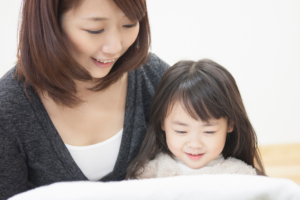The Possibility of Two Homes for Your Children

Cooperative parenting is encouraged in Singapore after a divorce has finalised to ensure that children are still able to gain access to both parents while growing up. Child custody in Singapore is unique because of its advocacy of co-parenting as the primary choice for divorced couples. The challenges to parent children across two different households may be numerous, but they can be overcome with a little planning and organisation. Besides, the advantages of having the children growing up with both parents in their lives far outweigh any challenges of shuttling the children between two households.
There are also benefits for the parents when proper arrangements are made to shuttle the children between two homes. It makes both parents feel involved in their children’s lives, and at the same time, be self-assured as a parent. It is especially relevant for fathers as they may not have as much experience in having a hands-on parenting role when the family was intact. With a dual home, fathers get the chance to set up a home for their children and learn the process of parenting effectively.
In order to move smoothly from one home into two homes, the process must be kept as uneventfully as it should be. Open communication between the separated spouses is a must, allowing discussions to flow naturally. Parents need to put aside their negative feelings for each other, and focus on doing the job well for the sake of their children. Oftentimes, one parent might feel that the best way to set up a new home would be to start anew, buying everything from scratch so that there are separate sets of everything in both homes. However, it might not be the best choice for the children. A mixture of new and existing items in both homes might be a better idea to help the children adapt to the changes in their environments. Let’s find out what need to be double up and what should be ferried between houses.
Things that should have double sets
Children needs to feel that they belong to both homes, so there are certain things that you need to have as a fixture in the home so that the children knows that it is solely theirs. Some of the main items are:
- Beds and Pillows
- Toothbrushes and toiletries
- Sleepwear
- Underwear
- A few sets of clothes
- Shoes
- Stationery for homework
- Mobile phone/Laptop chargers (for teenagers)
Younger children might need to do a lot of clothes swapping between homes. If this happens in your household, make sure to wash the dirty clothes and return them cleaned to the other home. It frustrates the other parent if children are going to return with a whole bag of dirty clothes every other week.
The best way to set up two homes for the children is to discuss with the other parent what they think works best and keep similar items in both homes to help the children adapt to both environments easily. Both parents can come to a compromise on what needs to double up and what can be ferried between homes. It would make the process smoother and present lesser stress to both parents and children.
Things that needs to be ferried
There are certain items that would need to be ferried between homes. These items include the children’s favourite teddies, school books, homework, uniforms, laptops, etc. It might be possible to buy new school uniforms to be kept at both homes, but it is a complete waste of resources and saving that money could mean having other things for the children.
It is wise to create a system for the things that need to be ferried. It is advisable for both parents to come up with a list of things that need to be ferried and keep to it. Train the children to be responsible for their personal favourite so that you will not meet the disaster of not having your child’s favourite teddy in the house during bedtime.
Buy a bag or make use of non-woven bags and label them as the “bag that goes between houses”. Tell the children that the bags are their responsibilities and they should put anything that they wanted to bring to the other home into the bags before they leave for the house. This help you on two fronts – one, it trains your children to be responsible for their actions, and two, it prevents a meltdown should the children forget their favourite teddies for bedtime.
There are also the school notices and party invites that need to be passed around to keep both parents in the loop of what is going in the children’s lives. It is best for both parents to keep a notice board in their homes near to the front door especially for these notices so that when children are ferried, these notices get passed on quickly and efficiently. Nonetheless, remind the children that these notices and party invites are also their responsibilities, and they must share the load in informing the other parent. In this way, it empowers the children and also makes them feel that they are valued in the family. Of course, this also reduces the irritation between the parents.
Setting up house rules
The next most important thing to do for the children is the setting up of house rules. Discuss with the other parent on basic house rules and make sure that both homes have the same rules. These rules regulate daily activities such as time for homework, meals, showers, TV and recreational activities. It would be ideal to have the same bedtime in both households as well. Having the same rules help children to adapt as they find security in routines. Besides these rules, it is also crucial to set up ground rules in both homes together with the children about basic respect for each other’s property as they may feel some form of distress in leaving some personal items behind. It is imperative that you set these rules together with the children and keep to it to lower the anxiety level experienced by the children.
It may seem daunting to set up two homes but if you do it right, things will work smoothly and children will quickly adapt to it in no time.














